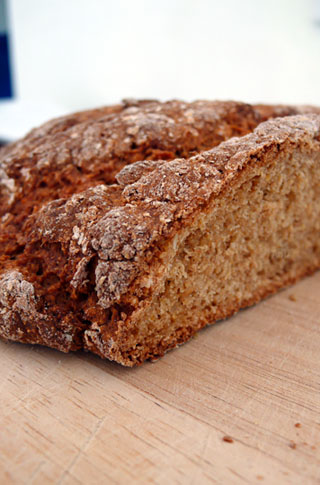Goodbye Tokyo…
Today is the final day of our holiday. I’m actually writing this at Narita airport (albeit struggling a little bit with the keyboard) while waiting for our flight. A couple of days ago, we had the most memorable meal of our entire trip, at Kikunoi in Kyoto. This restaurant located at the foot of a hill, according to the description I read somewhere, really redefined the Kaiseki experience for me, especially after having had a decent but relatively unexciting (and frankly, frighteningly expensive) Kaiseki meal earlier in Tokyo. Now I understand what the fuss is all about. Highlights of this meal included a Maitake mushroom ‘tea’ served in individual teapots with a wedge of lime, and Ayu, grilled over pine needles; their stomachs slashed to reveal a bulge of eggs, and one of the dessert courses, a brown sugar jelly with chrysanthemum leaves.
Photos and more details to come, of course, though the pictures will never do the real dishes justice.
Things I will miss when we leave Japan include, heated toilet seats (porcelain thrones redefining the excursive toilet going experience), Kyobancha, the many flavours of KitKat (peach, green tea, rockmelon, vanilla bean, chestnut and caramel) including KitKat icecream, rice crackers (especially the large ones, wrapped in nori and served warm), and cakes galore. Generally speaking, Tokyo leaves Sydney for dead as far as sweet treats are concerned. Not everything is great, but there’s more good than bad, and a lot more variety. Just when you think you’ve seen it all, each shop will have at least one unique item that really stands out from everything else you saw before it.
We ate a lot of cakes and really unhealthy streetfood like takoyaki and yakitori, but also did a lot of walking which evens everything out, I guess. We walked at least 10km on our second day in Kyoto – the effort of which was quickly negated by a visit that evening to a Tempura restaurant for a Tempura degustation.
Which reminds me Chef, next winter I really want to put a pear and chestnut number on the menu. Sydney doesn’t really celebrate chestnut season they way Japan does. I can just see it now, if I manage to translate the image in my head to what you get on the plate. It will be like Autumn on crack – spiced poached corella (baby) pear with soft chocolate cake, chantilly cream and montblanc, and a really deeply chocolate sauce. A spoonful of crisp air, falling red hued leaves, twigs snapping under your feet, and chai flavoured kisses. I’m not usually a huge fan of mont blanc, but I had a cake at the Manga Museum Cafe in Kyoto that tasted average, yet had a lot of potential in the idea itself.
Leaving Tokyo does have it’s good points though: I’m certainly not going to miss CNN (the only comprehensible things to watch on TV in the evenings – this is despite there being a Japanese gameshow on the other day where contestants appeared to be engaged in a farting competition) or miss taking photos (we’re nearing the 1000 photo mark (but with a lot of duplicates), so it will take awhile to sort through all of them before I can start posting about our holiday in detail).
Now that our holiday is at an end, I’m actually starting to think about work and am wondering how our little plants at home are faring….
Tags: Tokyo 2007





